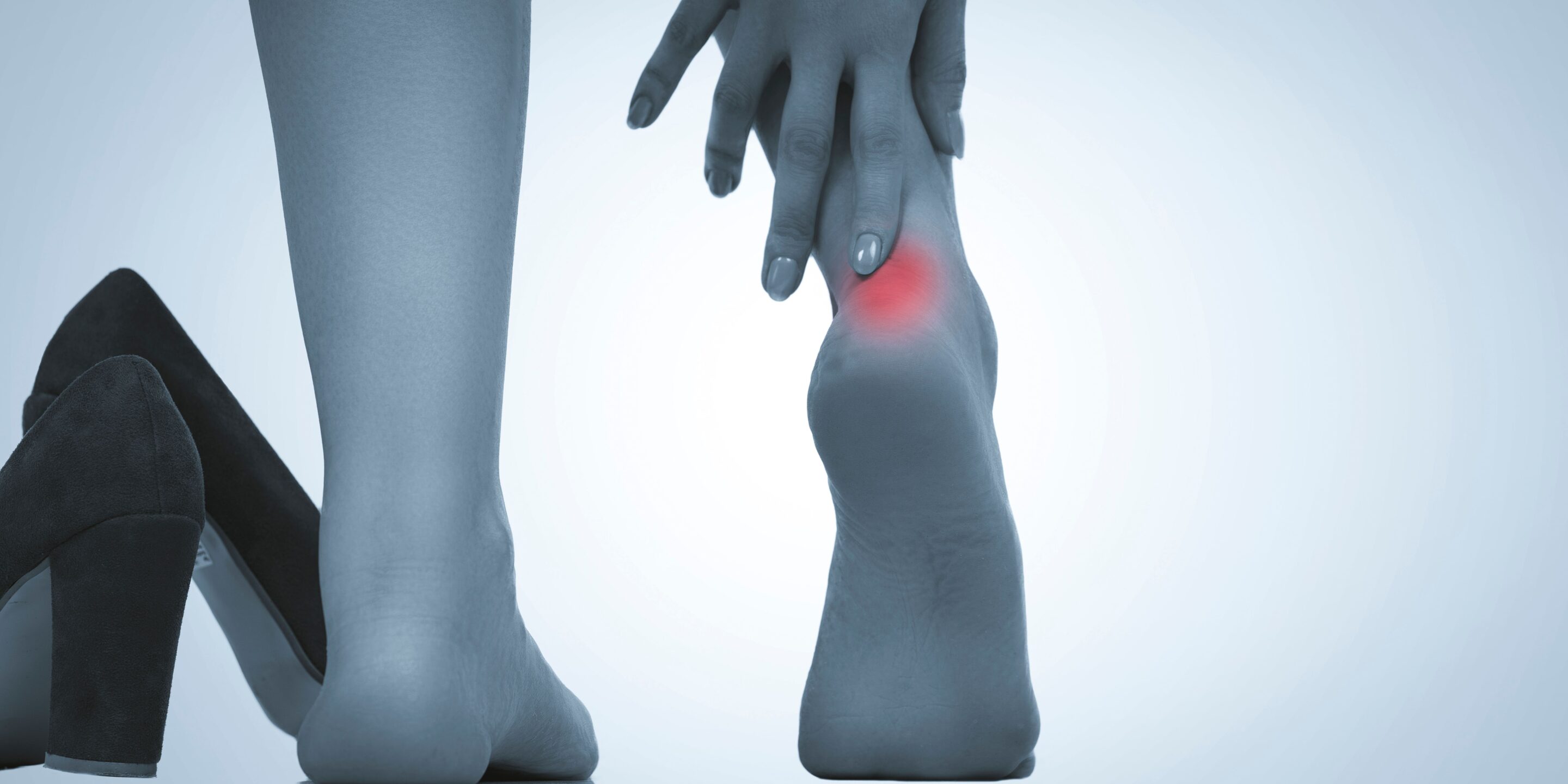Haglund’s Deformity and Heel Pain
Haglund’s Deformity, commonly known as “pump bump,” is a condition that affects the back of the heel, causing significant discomfort and pain. This bony enlargement can lead to various complications, including heel pain, Achilles tendon irritation, and altered foot mechanics. In this blog, we will delve into the intricacies of Haglund’s Deformity, exploring its causes, mechanisms, symptoms, diagnosis, and treatment options.
What is Haglund’s Deformity?
Haglund’s Deformity is a foot condition characterized by a bony prominence on the back of the heel. This prominence, often likened to a “pump bump,” can cause irritation and inflammation, resulting in heel pain and discomfort. The deformity typically develops due to a combination of factors, including foot structure, footwear choices, and the tight fit of shoes that put pressure on the back of the foot.

Understanding the Anatomy of Haglund’s Deformity
To comprehend the impact of Haglund’s Deformity on heel pain, it’s essential to understand the anatomy involved. The bony prominence that characterizes Haglund’s Deformity is located at the posterior aspect of the calcaneus, or heel bone. This enlargement can vary in size and shape but generally protrudes outward, making it susceptible to friction and pressure from footwear.
Mechanism of Heel Pain in Haglund’s Deformity
Bony Enlargement and Irritation: The bony prominence on the back of the heel can rub against the shoes, leading to irritation and inflammation. This constant friction can result in bursitis, which is the inflammation of the bursa sac located between the tendon and bone, causing additional pain and discomfort.
Achilles Tendon Irritation: The enlarged prominence can also irritate the Achilles tendon, the largest tendon in the body that connects the calf muscles to the heel bone. This irritation can lead to Achilles tendinitis, characterized by pain and stiffness along the tendon. In severe cases, it may also cause Achilles bursitis, further exacerbating symptoms.
Impact on Foot Mechanics
Haglund’s Deformity can alter foot biomechanics, leading to gait abnormalities and increased stress on the heel. When the bony prominence rubs against footwear, it can disrupt the natural movement of the foot, causing compensatory changes in gait. Over time, these altered foot mechanics can contribute to persistent heel pain and discomfort.
Symptoms of Haglund’s Deformity and Heel Pain:
The symptoms of Haglund’s Deformity can vary in severity but often include:
- Heel pain, especially with pressure or activity
- Swelling and inflammation around the back of the heel
- Redness and tenderness in the affected area
- Stiffness and limited range of motion in the ankle joint
- Discomfort when wearing shoes, especially those with rigid backs or narrow heels
It’s essential to note that symptoms may worsen with prolonged standing, walking, or running, as these activities increase pressure on the heel and exacerbate irritation.
Diagnosing Haglund’s Deformity
Diagnosing Haglund’s Deformity typically involves a thorough physical examination and may require imaging studies, such as X-rays or ultrasound, to assess the extent of the bony enlargement and associated soft tissue inflammation. Our seasoned podiatrists will evaluate your medical history, perform a detailed examination of the foot and ankle, and order appropriate diagnostic tests to confirm the diagnosis.
Importance of Seeking Professional Evaluation
If you are experiencing persistent heel pain or suspect Haglund’s Deformity, it is crucial to seek evaluation from our knowledgeable team. While self-care measures, such as rest, ice, and over-the-counter pain medications, may provide temporary relief, they do not address the underlying cause of the condition. Delaying diagnosis and treatment can lead to worsening symptoms and complications, ultimately affecting your quality of life and mobility.

Treatment Options for Haglund’s Deformity
The treatment approach for Haglund’s Deformity aims to alleviate symptoms, reduce inflammation, and prevent further progression of the condition. Depending on the severity of symptoms and underlying factors, treatment options may include:
Conservative Measures
- Modification of footwear: Wearing shoes with open backs or soft, cushioned heel counters can help reduce friction and pressure on the back of the heel.
- Orthotic inserts: Custom or over-the-counter shoe inserts can provide support and cushioning, redistributing pressure away from the bony prominence.
- Physical therapy: Specific exercises and stretches can improve flexibility, strengthen the muscles around the ankle, and correct abnormal foot mechanics.
- Anti-inflammatory medications: Nonsteroidal anti-inflammatory drugs (NSAIDs) may be prescribed to reduce pain and inflammation associated with Haglund’s Deformity.
- Activity modification: Avoiding high-impact activities that exacerbate symptoms can help alleviate pain and promote healing.
Minimally Invasive Procedures
- Corticosteroid injections: Injections of corticosteroids directly into the inflamed bursa or surrounding tissues can temporarily relieve pain and inflammation.
- MLS Laser Therapy: This non-invasive procedure uses synchronized dual wavelengths to stimulate healing and reduce pain in the affected area.
Surgical Intervention
If conservative measures fail to provide adequate relief or the deformity is severe, surgical intervention may be recommended. Surgical procedures for Haglund’s Deformity may involve:
- Removal of the bony prominence (Haglund’s exostectomy)
- Release of the Achilles tendon (Achilles tendon lengthening)
- Repair of damaged soft tissues (Achilles tendon debridement)
- Reconstruction of the heel bone or Achilles tendon insertion (osteotomy or tendon transfer)
It’s essential to discuss the benefits, risks, and expected outcomes of each treatment option with our experienced team to determine the most appropriate course of action based on your individual needs and preferences.
If you are experiencing persistent heel pain or suspect Haglund’s Deformity, contact our office to learn more about Haglund’s Deformity, and treatment options, and schedule an appointment for personalized care and relief from heel pain.
Haglund’s Deformity can significantly impact daily activities and quality of life due to persistent heel pain and discomfort. Understanding this condition’s causes, mechanisms, symptoms, diagnosis, and treatment options is crucial for effective management and relief. By seeking professional evaluation and appropriate treatment, individuals can alleviate symptoms, improve foot health, and regain mobility, allowing them to resume their daily activities with comfort and confidence.
